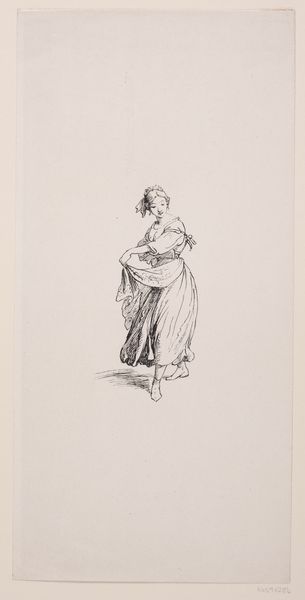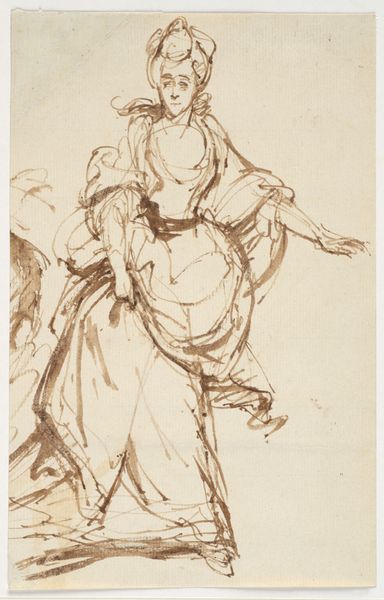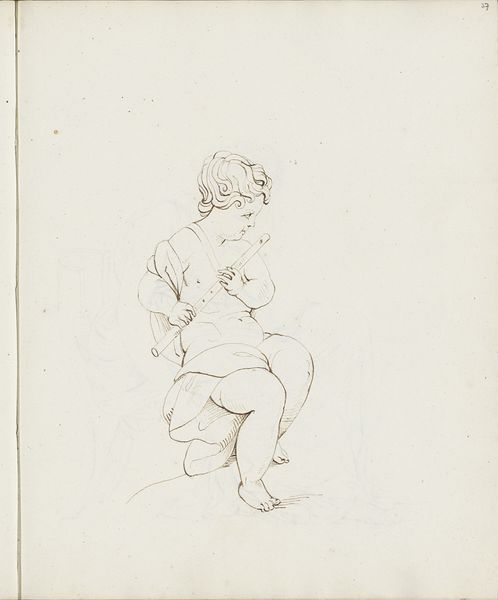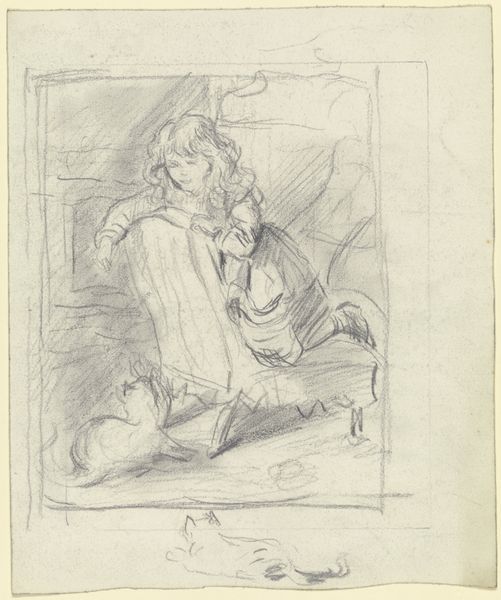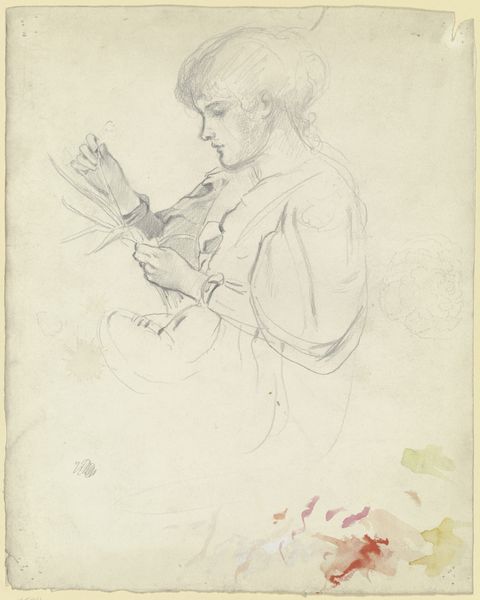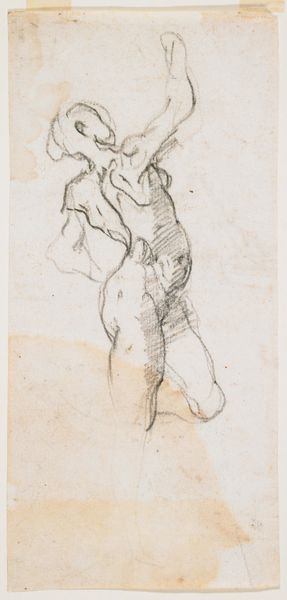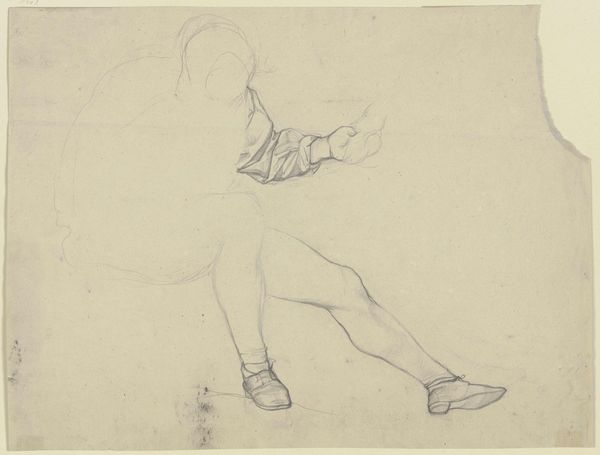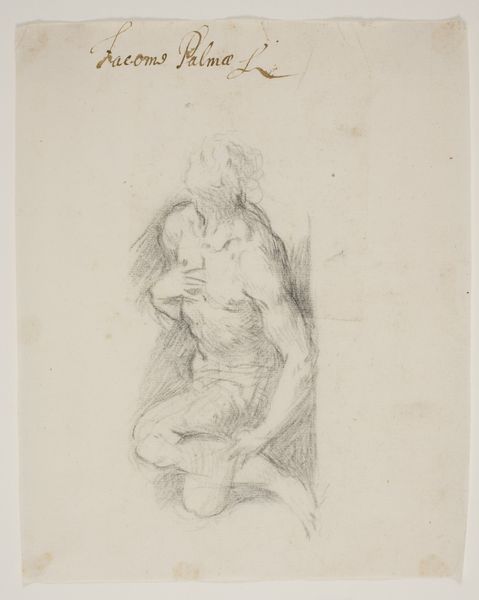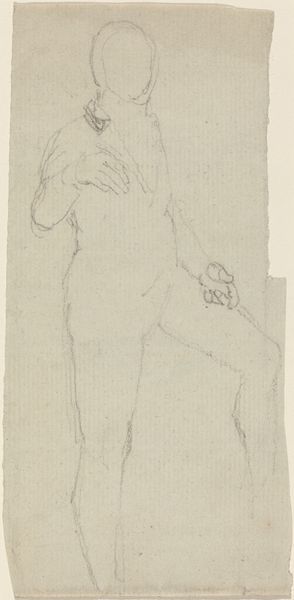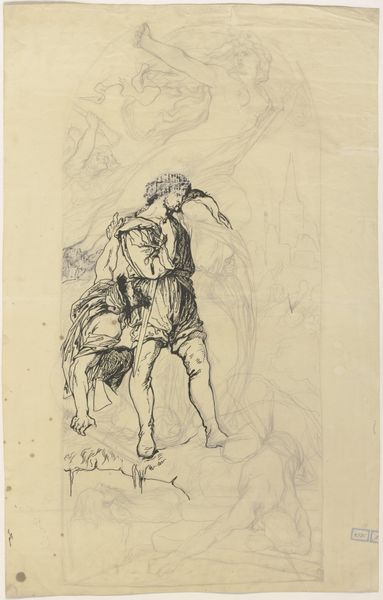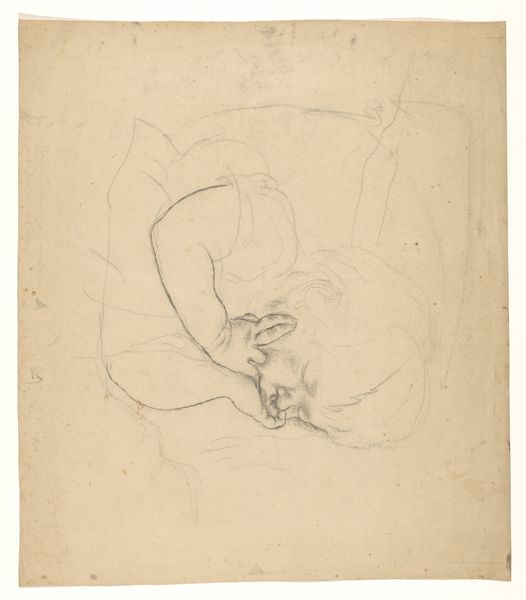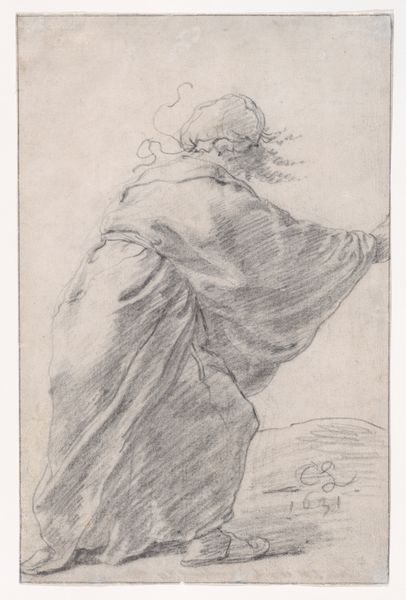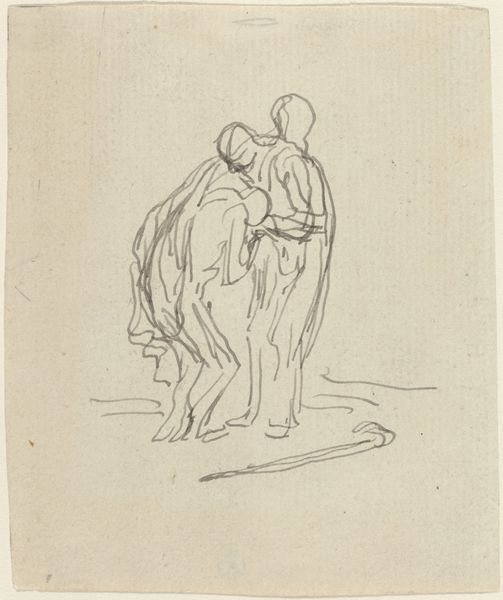
drawing, paper, pen
#
portrait
#
drawing
#
neoclacissism
#
figuration
#
paper
#
romanticism
#
pen
#
genre-painting
Dimensions: height 212 mm, width 162 mm
Copyright: Rijks Museum: Open Domain
Curator: Well, here we have “Kind met dwarsfluit,” or “Child with Flute,” a pen drawing on paper by David-Pierre Giottino Humbert de Superville. It's part of the Rijksmuseum's collection and is dated somewhere between 1780 and 1849. Editor: It's interesting! Immediately I'm struck by its raw quality, the somewhat awkward positioning of the child, and that lovely, sepia-toned line work. You can practically see the artist wrestling with form and contour. Curator: Precisely! This was a period wrestling with neoclassical ideals filtered through emerging romantic sensibilities. What strikes me is how Superville uses the simple tools, pen and paper, to make what’s seemingly a sketch into an aesthetic commentary on artistic representation. How might something like this have functioned socially? Editor: Perhaps it's a study? We need to consider how academies valued drawing, particularly preparatory sketches. Was it shown publicly? Was it made as a copy, for pedagogical purpose? Curator: The labor implied in this quick depiction is palpable. Think about the artist carefully rendering the texture of the paper, using simple ink. What's valuable here isn't technical perfection, but instead, is that the final product shows this direct transfer of mental energy. Editor: But looking at it through the social lens, the piece flirts with idealized youth, the type of imagery that gained enormous currency through mass reproduction in the nineteenth century, for consumption by emerging bourgeoisie, creating new channels and ways to participate to the arts. Curator: Yes, the implications on labor and commerce were vast during that era. Editor: It shows that art becomes enmeshed with power, whether it's political or social, by controlling circulation, determining its value, and so on. Curator: Indeed! The artist's individual act intertwines with larger social currents and the consumption patterns of his time. Editor: This intersection makes "Child with Flute" far more than just an individual sketch; it becomes an index of that historical moment and the means of producing artwork. Curator: A thought that beautifully summarizes how we understand "Kind met dwarsfluit" today! Editor: Exactly, it prompts us to reconsider artistic value beyond the aesthetic appreciation to its broader function within a network of production, presentation and consumption.
Comments
No comments
Be the first to comment and join the conversation on the ultimate creative platform.

